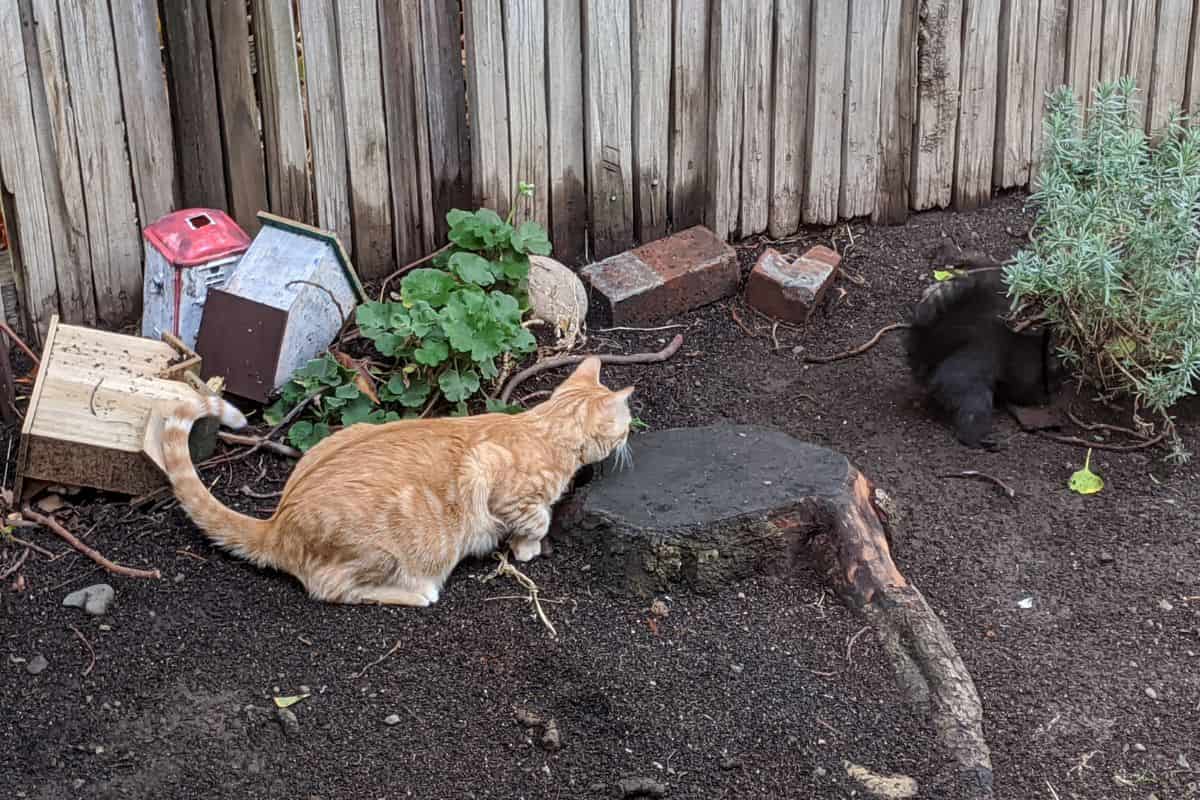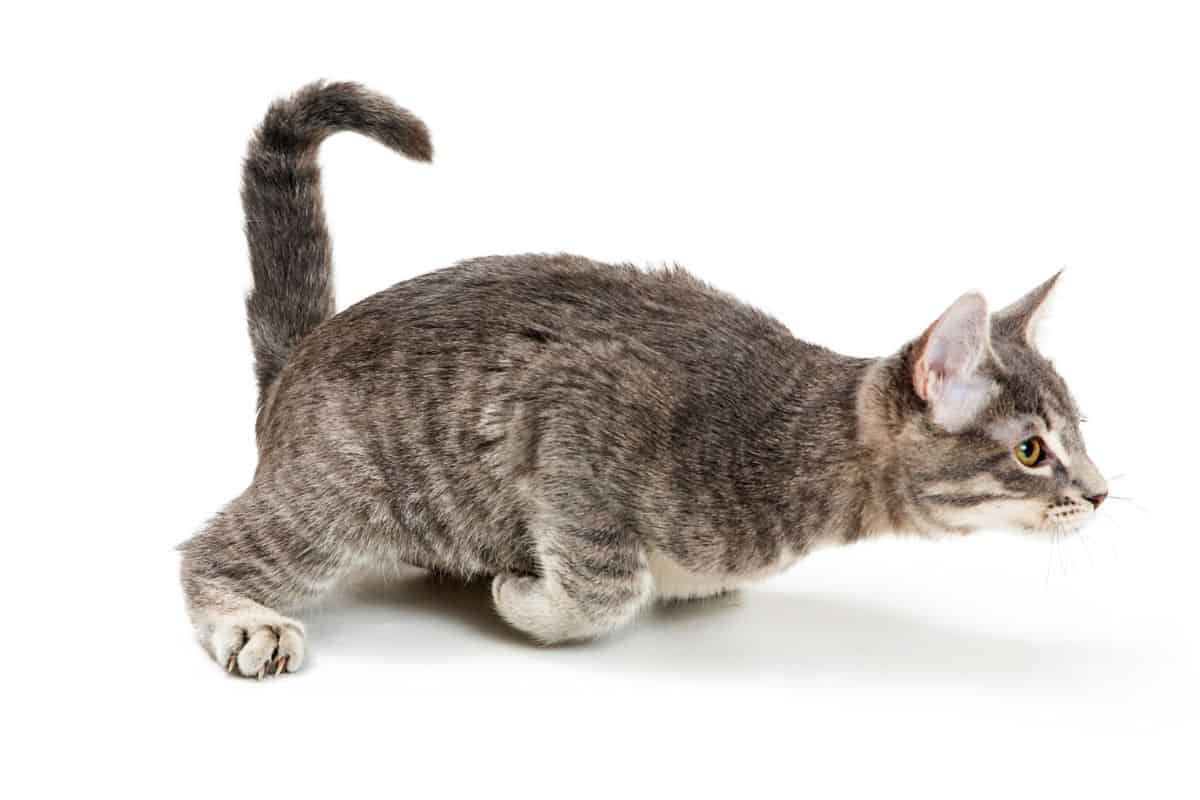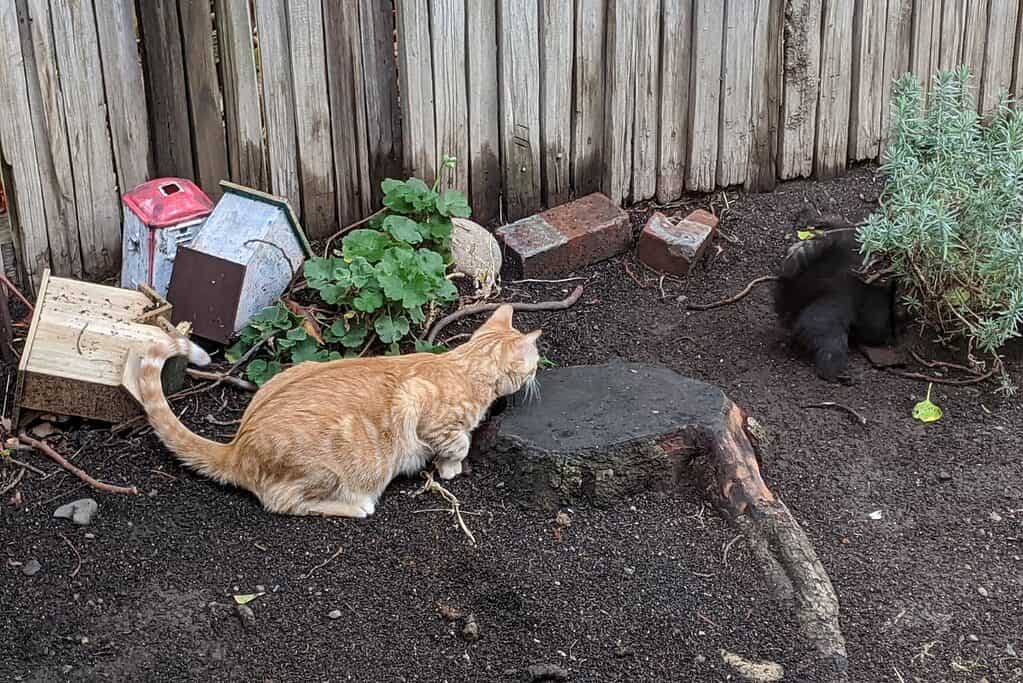Cats are endlessly cute and entertaining to watch with they behaviors. One such behavior that many cat owners have likely observed is the “butt wiggle” – when a cat moves its hindquarters back and forth in a rhythmic motion. But why do cats do this?
The cat butt wiggle has spawned many memes and funny videos. As cute as those videos are, the reasons behind why cats wiggle their butts is related to the fact that cats are predators.
This behavior is most commonly observed when a cat stalks its prey, but it can also occur during playtime or when the cat is excited or happy.
As predators, cats are built for short bursts of intense energy. When hunting, cats can spend hours watching and stalking their prey before they spring into action.
The wiggle is usually a subtle movement that becomes more pronounced as the cat’s level of excitement increases. The cat’s tail may wiggle along with the hindquarters, and the cat’s entire body may sway back and forth.

The “butt wiggle” prepares the cat for a burst of energy
The biggest clue that a cat is about to go after their prey is an intense stare that is laser-focused on the object of their hunt and the emergence of the “butt wiggle”.
When a cat is preparing to pounce, the cat will begin to crouch down and bring their body closer to the ground while keeping weight over the hind legs. This position allows the cat to move quickly and quietly, and to stay balanced.
Next, the cat will start wiggling their hindquarters. This action does two things.
The wiggling helps to stretch-out and warm up the muscles in the back legs. After sitting still watching for prey, the wiggle is a form of stretches that helps to increase blood flow to the muscles.
The wiggling also helps to build up energy in the cat’s body. During this positioning, the cat will adjust their back feet and raise their behind slightly. The wiggling action is believed to help the cat to press those back feet into the ground, giving them more traction once they are ready to leap.

Wiggling helps the cat to focus
The “butt wiggling” is believed to also help the cat mentally focus during a hunt. The butt wiggle is seen as a way of releasing adrenaline, as well as increasing the blood flow to the muscles, preparing the cat for the action of pouncing.
Butt wiggling is thought to also help the cat to release built-up excitement at seeing prey (or that fluffy toy).

The cat pounce
Once the cat has built up focus and energy, they are ready to pounce. The action of the butt wiggle happens very quickly.
Right before they pounce, the forelimbs of the cat will be low to the ground while the hindquarters are slightly raised. Right before they leap, the cat will raise themselves up by their front legs. The cat will then leap forward with the front paws outstretched towards the target while the back legs push off from the ground.
References
Hagerman, J. (2020, March 2). Mystery solved: Why cats wiggle their behinds before pouncing. Pasadena Star News. https://www.pasadenastarnews.com/2020/03/02/mystery-solved-why-cats-wiggle-their-behinds-before-pouncing/







